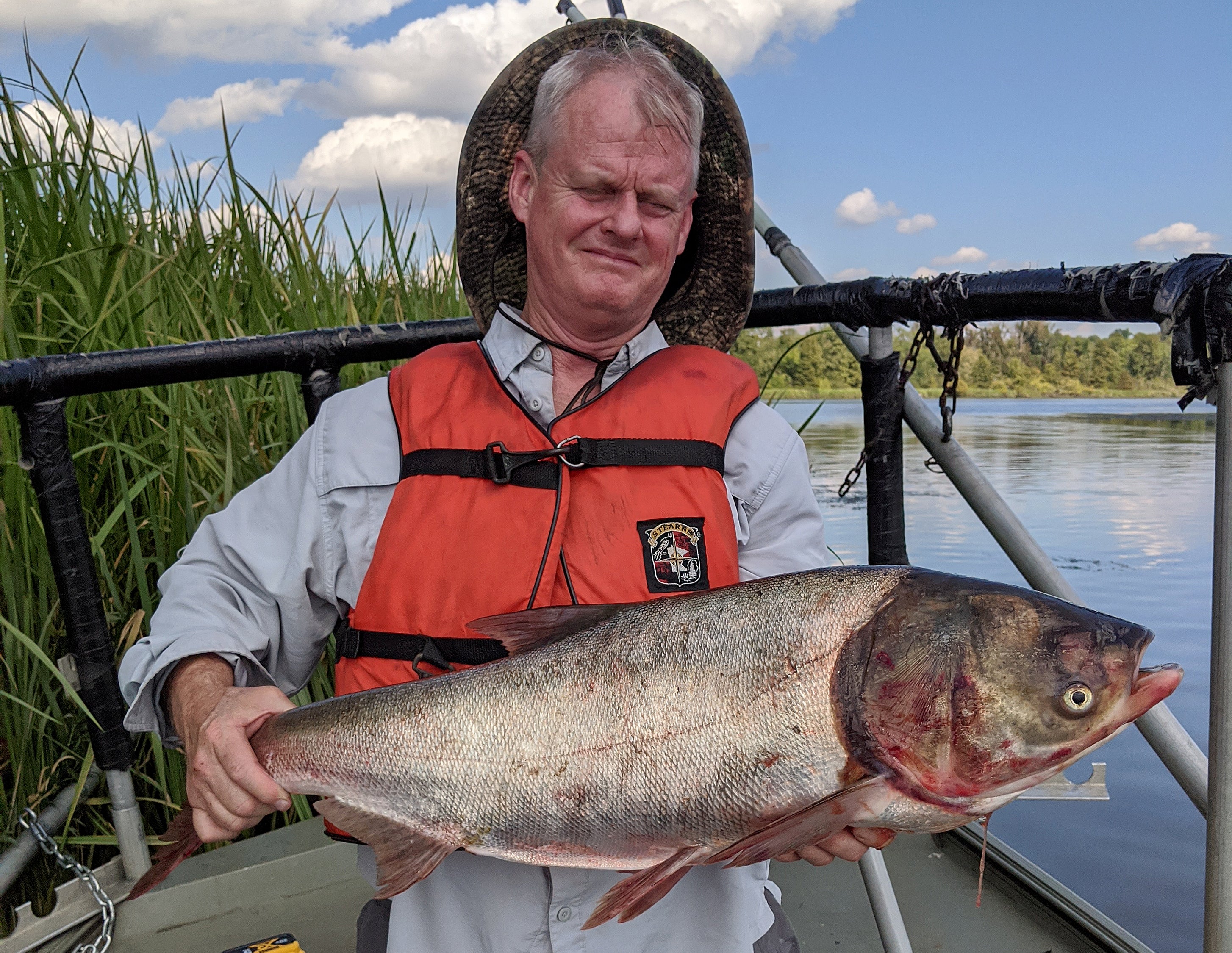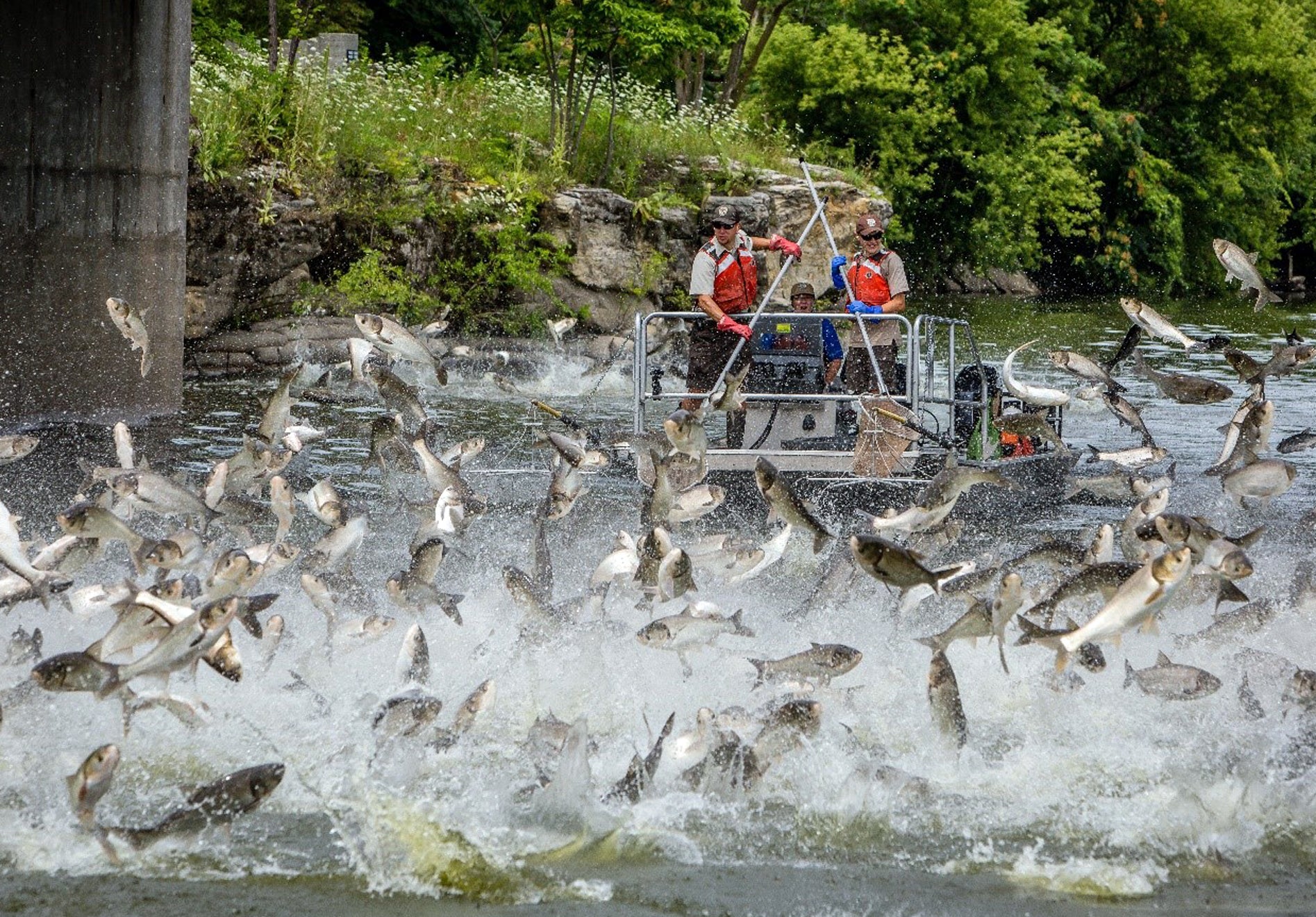By DAVID RAINER, Alabama Department of Conservation and Natural Resources
Dave Armstrong is planning to go hunting when the weather cools off, but he actually hopes he doesn’t find an abundance of the species he’s stalking.
Armstrong is the Aquatic Nuisance Species Coordinator with the Alabama Department of Conservation and Natural Resources’ (ADCNR) Wildlife and Freshwater (WFF) Division, and he and the Fisheries Section staff will be searching for several invasive carp species – silver, bighead, grass and black. Those carp, especially the silver, can be detrimental to native aquatic species in riverine habitats, including the Tennessee River lakes – Pickwick, Wilson, Wheeler and Guntersville – that traverse the northern third of Alabama.
Anyone who has spent a little time on the internet has likely seen the photos or videos of silver carp jumping around boats in huge numbers that require the boat passengers to wear protective gear to keep from being injured by the flying carp.
More important than the hazards of the jumping fish is the destruction of aquatic habitat. The silver carp is a filter feeder that consumes zooplankton and phytoplankton, basically the bottom of the food chain. That means the carp are competing with other fish species, including native shad and bream populations, in that body of water for the food supply.
Fortunately for Alabama, populations large enough to cause the above problems have not been found in the state.
“I’d say the silvers are in relatively low to moderate abundance in Pickwick,” Armstrong said. “They are fairly rare to uncommon in Wilson. We picked up four last year, and TVA (Tennessee Valley Authority) picked up three in Wilson over several years. A couple were reported to WFF in Wheeler around Flint Creek, and one in Guntersville.”
Armstrong said the WFF staff conduct electrofishing operations on Pickwick and never pick up a carp at certain times of the years. At other times, they find several.
“When we go to sites in the fall or especially in the winter when they’re all huddled up, looking for warm water in the coves and creeks, that’s the time where we really get them,” he said. “We can go from zero to 10 or 20, especially when we have multiple boats. We’ve been assisting tagging efforts for the last three years with TWRA (Tennessee Wildlife Resources Agency) and the federal agencies. We’ve been tagging a couple of hundred each year to see where these fish are moving. We leave some in Pickwick, and we take some downstream to Kentucky Lake to see if they are moving back through the dams.”
Earlier this year, the Nashville and Mobile districts of the U.S. Army Corps of Engineers held public meetings about the possible methods of mitigation to keep these invasive species from spreading. The discussion centered around the Corps’ pilot program, which requires a report to the U.S. Congress on “analysis of the effectiveness of the innovative technologies, methods, and measures used in projects carried out under the pilot program at preventing the spread or managing the eradication of Asian Carp.” The pilot program partners include ADCNR, U.S. Fish and Wildlife Service, U.S. Geological Survey, TVA, TWRA, Mississippi Department of Wildlife, Fisheries and Parks, and the Kentucky Department of Fish and Wildlife Resources.








